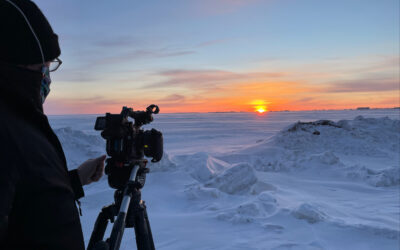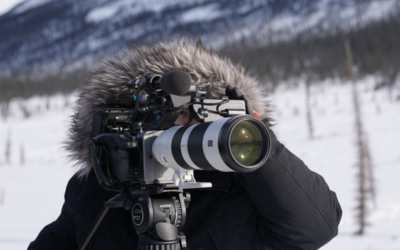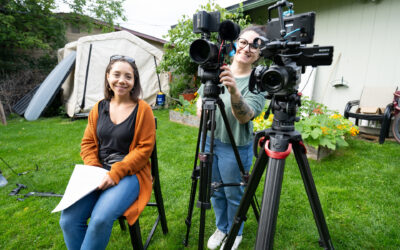Alaska’s vast landscapes, dramatic weather, and powerful cultural narratives make it a dream location for filmmakers. But if you’re considering filming in Alaska, there’s one crucial step that can make or break your project: partnering with a local production company.
This isn’t just about convenience, it’s about logistical expertise and accurate storytelling. If you’ve ever seen the 2015 film Aloha with Bradley Cooper and Emma Stone, you may recall the first scene of the film inaccurately describes the islands of Hawaii as the 49th state. In fact, Alaska is the 49th state and Hawaii is the 50th.
Is this small detail why the film rated poorly among film critics? Perhaps. But more likely it was the cumulative sum of many similarly small details that were overlooked—all of which could have been easily avoided by hiring local!
Navigate Alaska’s Unique Logistics with a Local Film Crew
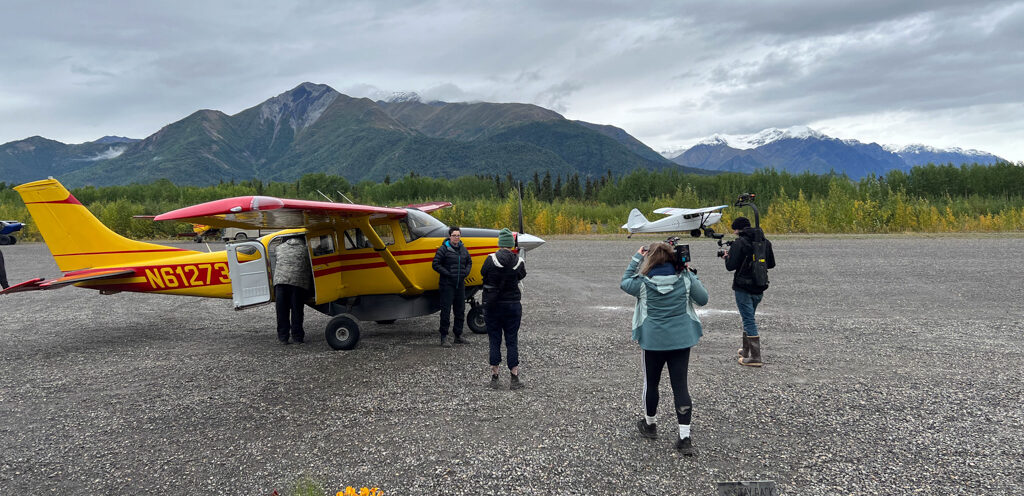
Our Audio Engineer, Derek Haukaas, loads gear into a small plane on a gravel runway in McCarthy, Alaska, while other crew members grab an interview with the talent, Sue Perkins, on a shoot for Sue Perkins: Lost in Alaska.
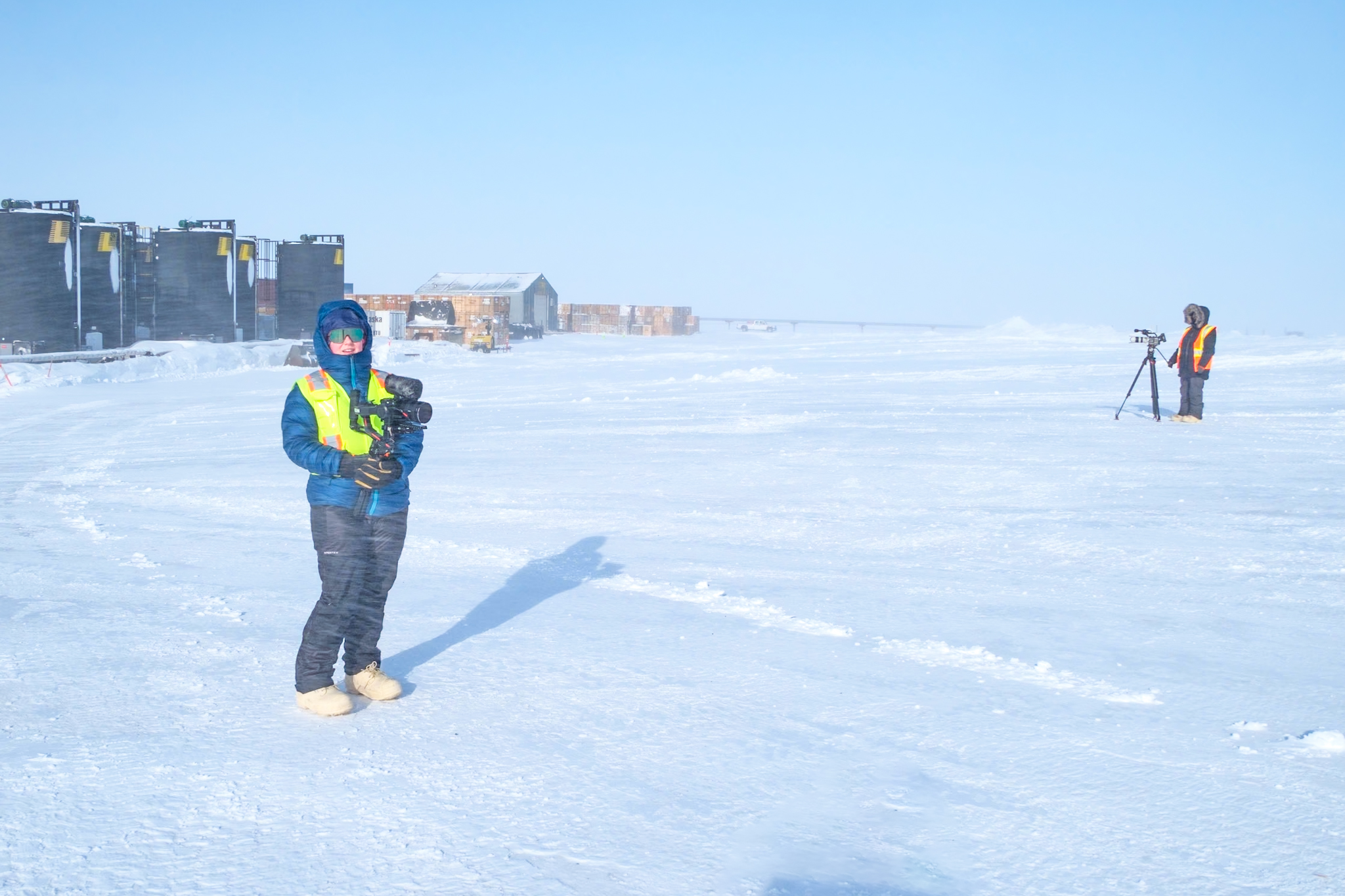
Our cinematographers Hannah Pratt and Courtney Dean brave the elements on the North Slope of Alaska for a commercial film shoot.
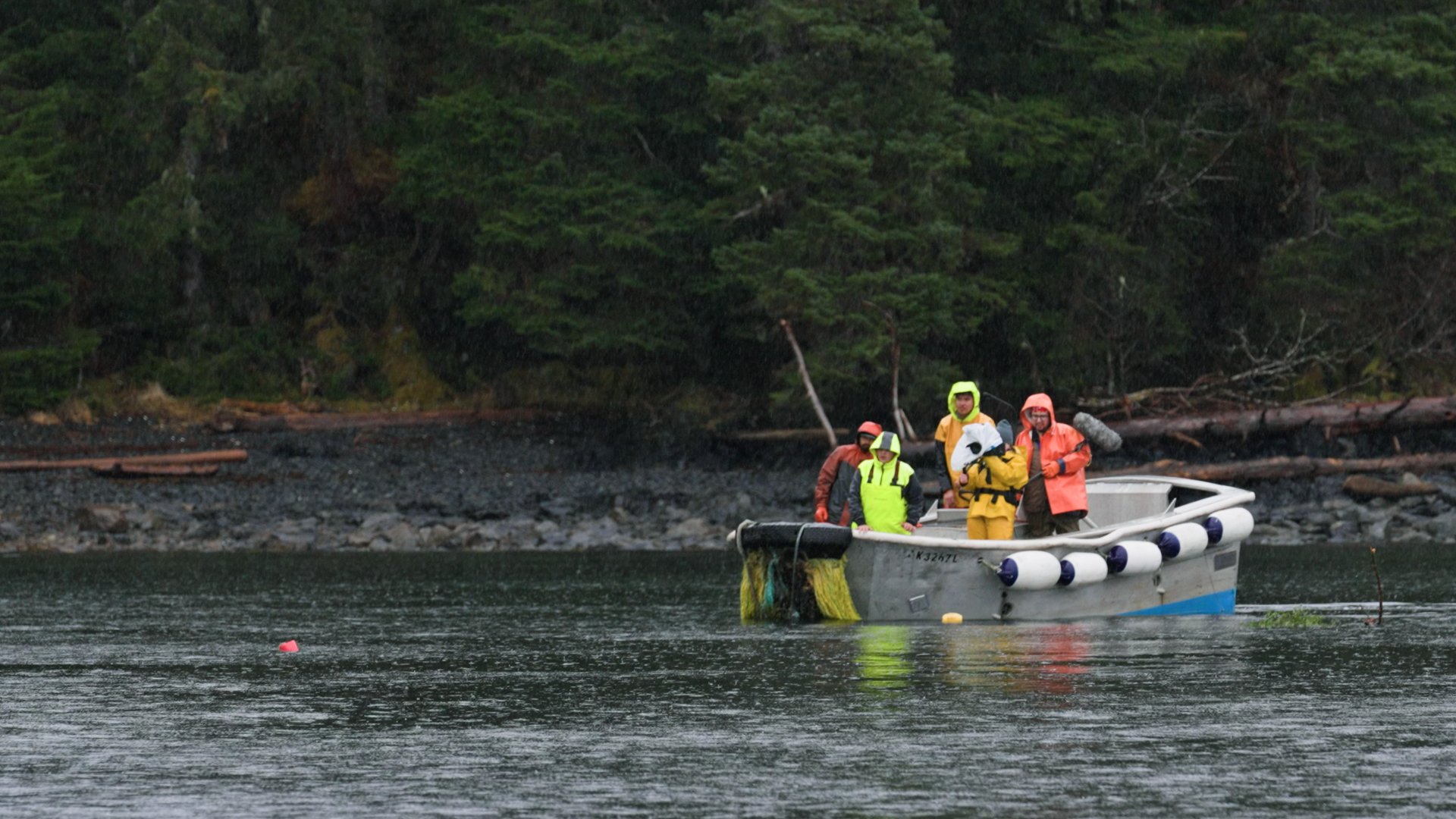
Derek (on the right) and Hannah (next to him in yellow) capture the herring egg harvest in Sitka, Alaska… in the pouring rain. Note the camera covered by a garbage bag.
Alaska is unlike any other U.S. State when it comes to logistics in a way that’s hard to explain to outsiders. Weather can shift in an instant, roads may not exist in remote areas (or have minimal signage when they do), and transportation often requires bush planes, boats, or snow machines (aka snow mobiles to non-Alaskans) – or all of the above.
In addition, each season brings its own unique challenges. Summer brings crowds and limits accommodations, tours, transportation, and more. Winter brings even more unpredictability, starting with extremely short days and weather limitations, which extend to every aspect of your Alaskan adventure.
An experienced Alaskan production company knows how to operate in these extreme conditions. From scouting locations accessible only by floatplane to powering equipment in sub-zero temperatures, a local crew brings hard-earned, boots-on-the-ground knowledge that saves time, money, and stress.
A local company offers more than what you can find online about gear and services—it brings insider knowledge that goes beyond what you get on screen. This includes access to hard-to-find locations, travel shortcuts in areas where rentals aren’t available, and accurate travel times that Google Maps can’t predict (like when a road is actually a rough dirt path). We’re also prepared for any weather conditions—no last-minute gear runs needed, because we already have everything on hand.
Engaging a local production company also plays a vital role in ensuring a safer shooting environment, not only by maintaining strict compliance with regional regulations but by offering critical insight into the unique logistical demands of the area. Electric socks, body warmers, Yaktrax, Xtratufs, cardboard—each seemingly simple items serves a specific safety purpose in Alaska’s often unpredictable conditions. A local crew doesn’t just know when these tools are needed, they have them on hand and ready to go.
Planning to shoot on the water or fly into remote terrain? A local team brings longstanding relationships with trusted vendors and operators whose deep familiarity with the environment—and year-round presence in Alaska—ensures both reliability and safety at every step.
Understand Local Indigenous Communities in Alaska
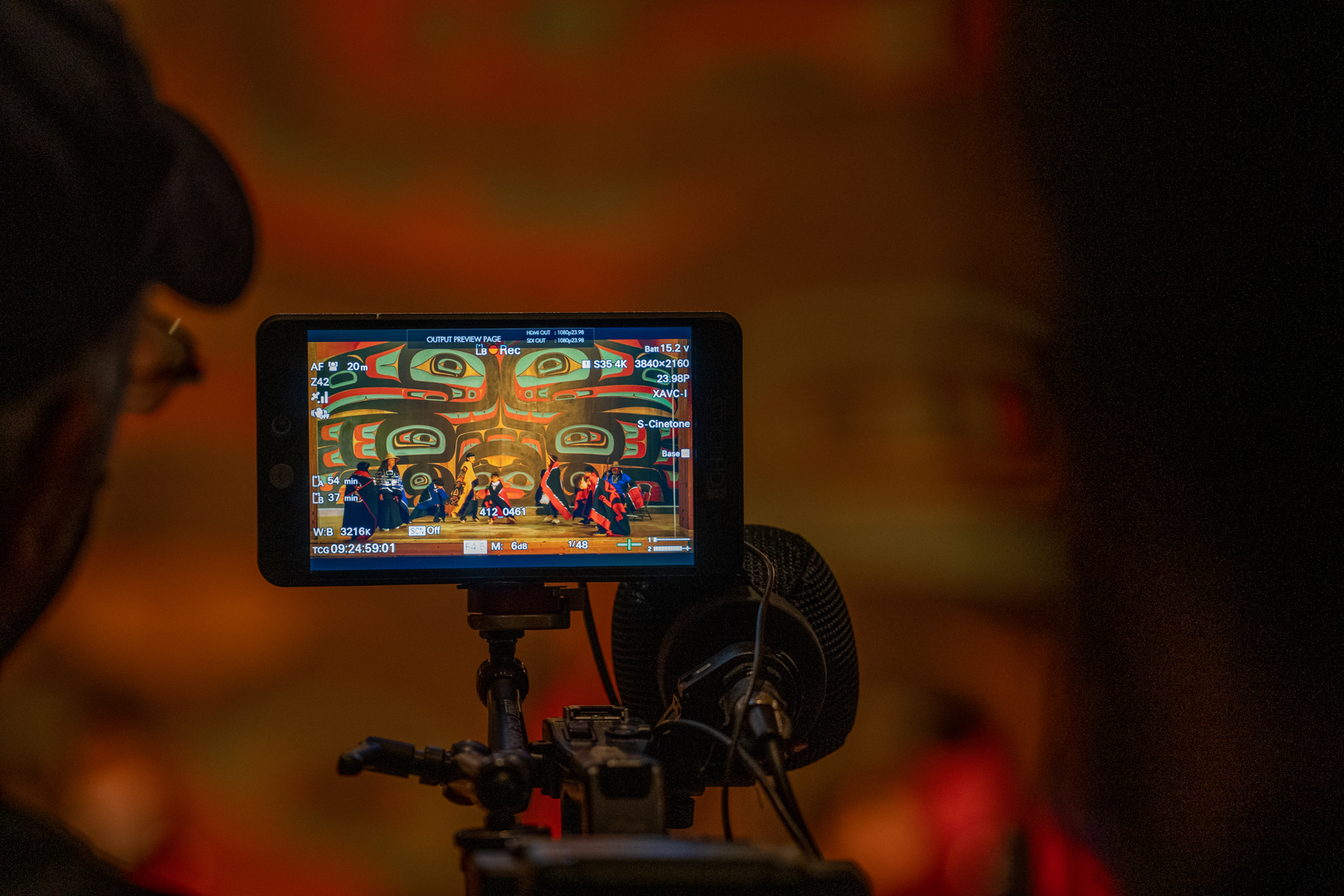
Filming at Celebration in Juneau, Alaska. The four-day dance-and-culture festival put on every other year by Sealaska Heritage Institute.
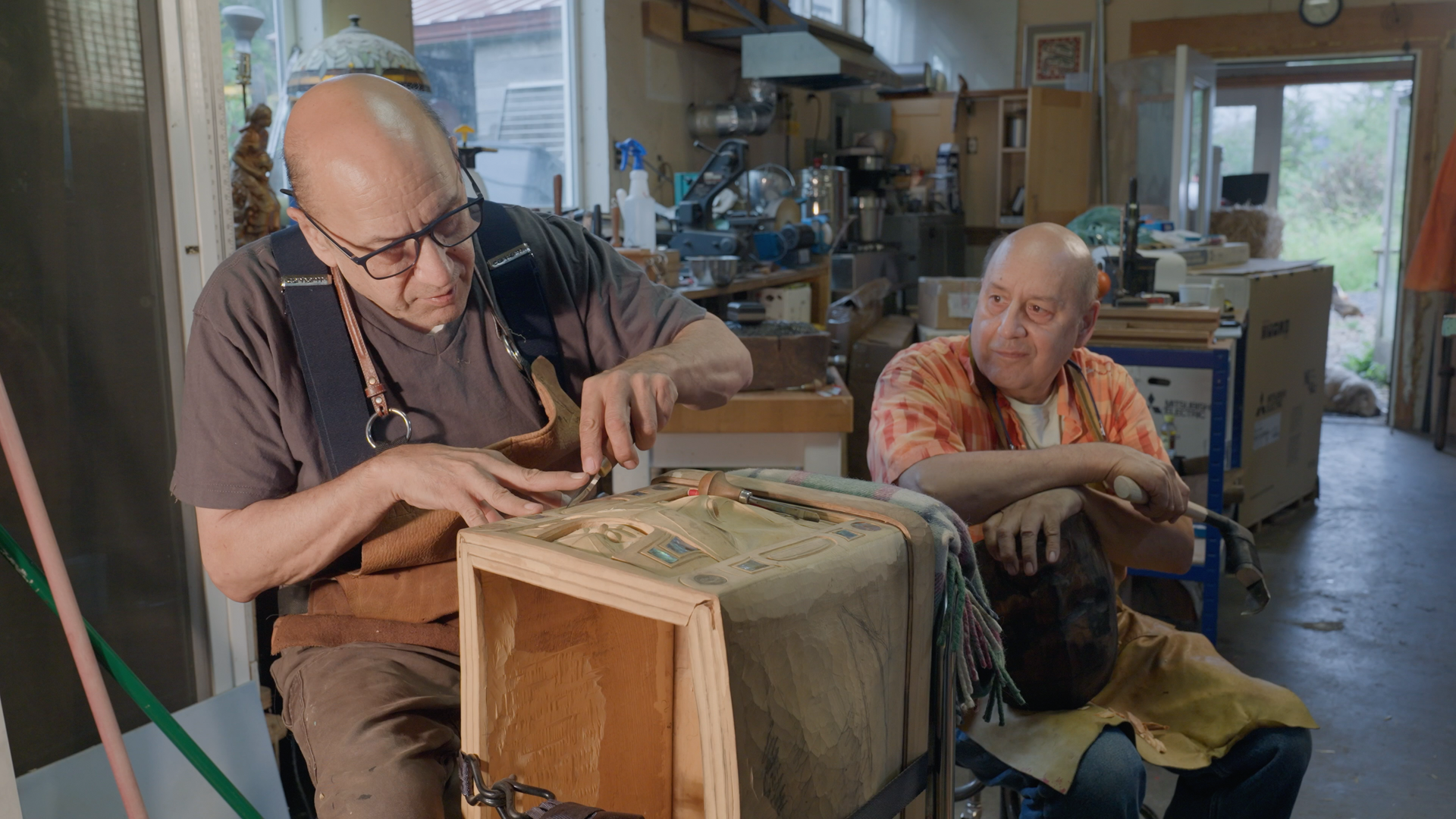
A still from Mick and Rick Beasley‘s video in the Goldbelt Artist Spotlight series. The series highlights Lingit artists in the Juneau area who are creating art that carries on their cultural traditions.
One of the most overlooked but essential aspects of filming in Alaska is the need to work with Indigenous communities, especially in rural villages. Alaska has over 200 federally recognized tribes whose members make up a significant percentage of the state’s population and are the majority in rural locations.
These communities often have unwritten rules and cultural protocols that outsiders may not be aware of. For the best production experience, it is essential to understand what should and should not be filmed, and to get permission from the Indigenous community.
When working with Alaska Native communities, locals understand that timelines may be more flexible (due to remoteness, unpredictable weather, harvest schedules, cultural events, etc), and communication can take longer or require more patience and understanding. Of course, the same goes for any remote Alaskan community, regardless of whether the residents are Indigenous or not. Local production teams are experienced in navigating these dynamics with respect and cultural awareness.
A local production company understands the nuances and the many entities involved, and especially who to contact for each city, town, or village. For example, when filming in Utqiagvik, Alaska, it’s important to know the town was formerly known as Barrow and still uses the BRW airport code. Utqiagvik is part of the North Slope Borough, which oversees all commercial film permits.
A local production company has already built relationships with tribal councils and Elders, knows how to seek permission (and how long that can take), and understands how to approach culturally sensitive topics with the respect they deserve. This applies to both off and on camera.
This cultural fluency helps you avoid delays, misunderstandings, or unintentional harm—and ensures your story is told ethically and responsibly.
Built-In Trust and Access Through Local Partnerships
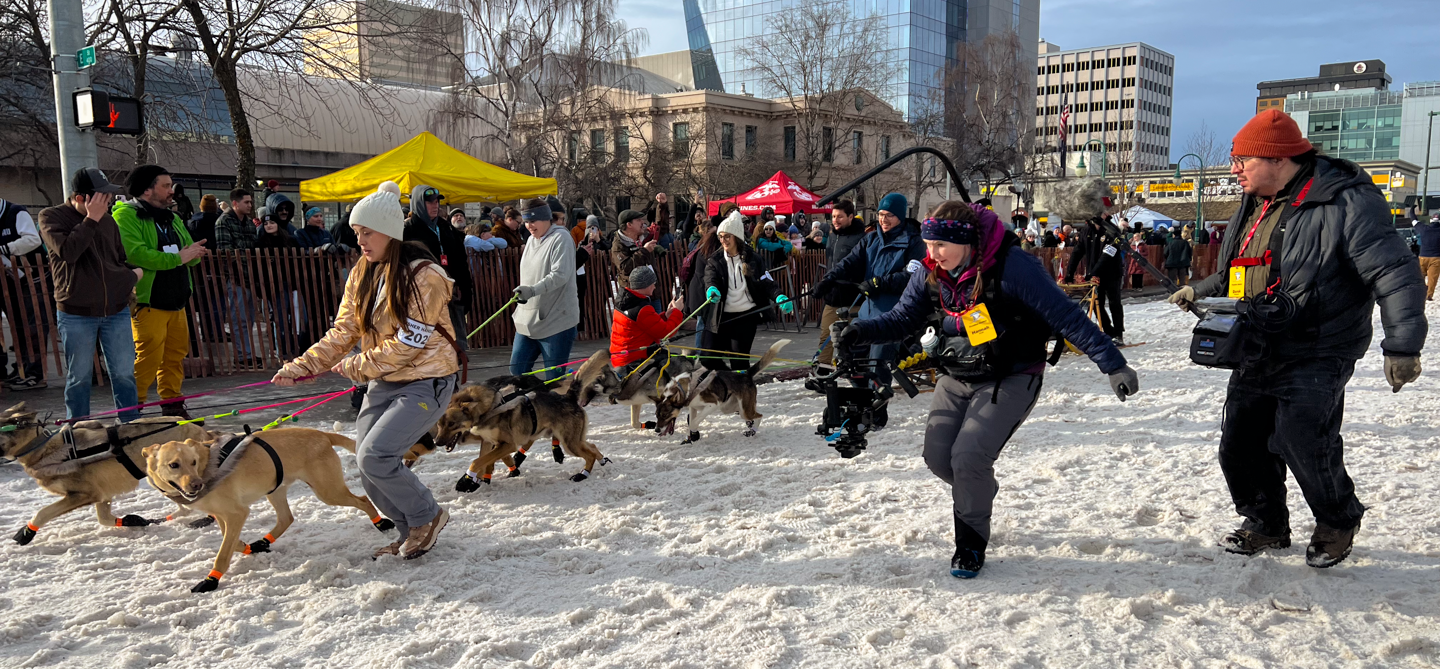
Hannah and Derek run alongside a sled dog team at the ceremonial start of the Iditarod in Anchorage, Alaska.
Trust is everything in Alaska’s tight knit communities. A local film production company in Alaska brings credibility and existing relationships that can unlock doors—especially in villages where a cold call from an out-of-state producer won’t get a call back.
Whether you’re seeking interviews, location access, or community support, your production will benefit from the reputation and rapport a local team has built over time.
Tell Authentic Stories with Cultural Accuracy—Across All of Alaska
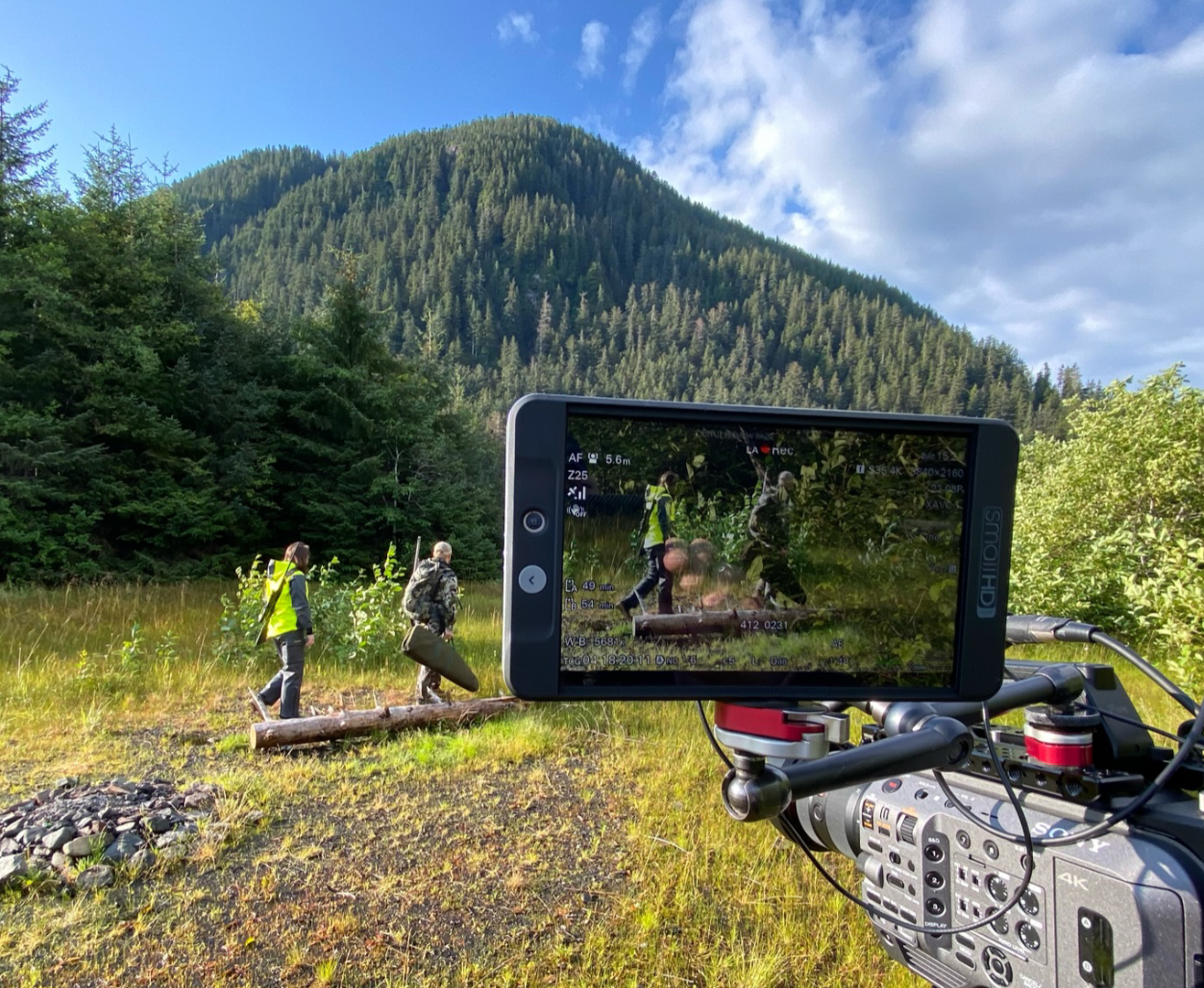
Filming in Sitka, Alaska as part of a shoot that included capturing common local activities such as hunting, fishing, kayaking, biking, and more.
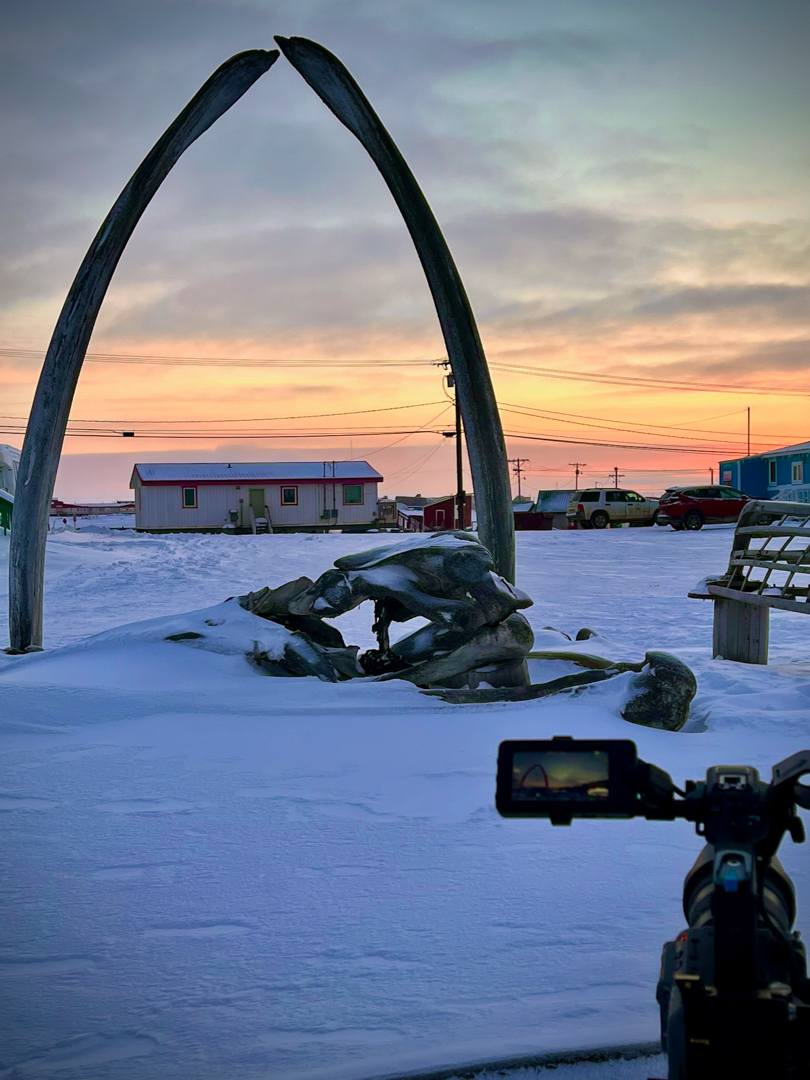
Filming in Utqiagvik, Alaska at the Whale Bone Arch during the last sunset of the year. Each year, the sun disappears below the horizon for the last time in mid-November and doesn’t come up again until the end of January.
Cultural accuracy and local authenticity are not just ethical best practices, they’re essential for storytelling that resonates with audiences and respects the people who live here. Alaska is a land of immense diversity, not only in its landscapes but also in its communities, cultures, and ways of life. Misrepresentation can reduce your credibility, alienate locals, damage trust, and miss the rich nuances that make Alaska compelling in the first place.
If your film includes Alaska Native histories, identities, or modern-day issues, cultural accuracy is non-negotiable. But the same principle applies to all aspects of life in Alaska—from rural fishing villages to urban towns. These stories can’t be Googled or guessed; they have to be experienced, understood, and told with care.
That’s where local production partners become invaluable. Many Alaskan producers bring not only technical expertise, but also deep, lived knowledge of the state’s complex social, cultural, and geographic fabric. They understand the distinctions between communities that outsiders often conflate—like the differences between Southeast Alaska and the Arctic, or the unique identities of the more than 200 federally recognized tribes across the state.
They also know how to engage with locals respectfully, navigate sensitive topics, and bring real stories to life without falling into stereotypes or generalizations. For example, you will often see the word Tlingit used for one of the Indigenous groups of the people of Southeast Alaska, but Lingit is how it is spelled in the language itself and the most accurate spelling to use. To read more about this topic, visit Alaska Public Media.
Whether you’re filming a drama set in a remote village, a documentary on subsistence lifestyles, or a commercial showcasing Alaskan adventure, working with local creatives ensures your story feels true, because it is true. It honors the voices of the people you’re portraying, and creates a final product that resonates more deeply—with both local audiences and viewers around the world.
Support the Local Economy and Sustainable Filmmaking

Hannah and our Executive Producer, Rich Cooper, (both in hats), on a shoot in Sitka, Alaska.
Hiring a local Alaska production company isn’t just the ethical choice, it’s also a smart business decision. It strengthens the local creative economy, builds capacity for future productions, and demonstrates to funders, networks, and audiences that your project is grounded in integrity and collaboration. Working with in-state professionals supports the regional creative economy and helps build a more sustainable industry by developing local talent and infrastructure for future productions.
Local teams bring invaluable insider knowledge and often have access to grants, tax incentives, and streamlined permitting processes that out-of-state teams may miss. In addition, hiring locals can significantly reduce travel, lodging, and per diem expenses, making your budget go further in a state with high cost-of-living, without compromising on quality. It’s a win-win for your production and for Alaska’s creative community.
Conclusion: Film Local, Film Smart
Alaska is breathtaking—but it’s also complex. If you want to film here successfully, you need a team that not only knows the land, but respects is people, cultures, and rhythms.
Hiring a local production company is the single best investment you can make for your film, commercial, or documentary.
AUDRA HENDERSON is an experienced producer with over two decades of storytelling experience. Her career began on the research team at the Late Show with David Letterman, and has since spanned a wide range of productions, including Life Below Zero (NatGeo) and Alaskan Bush People (Discovery).
Audra has produced everything from network projects for Discovery and CBS to branded content for clients like SEARHC or Dell, as well as mission-driven documentaries such as COLOR (All The Way Around Productions) and People vs. Politics (Fluent Knowledge, currently in post-production). With a knack for managing complex logistics in remote locations and an eye for detail, she guides each project from concept through post-production with creativity, passion, and heart.
Her academic background includes a BA in Communication from Pennsylvania State University, a Master’s from the University of Alaska Anchorage, and a certification as a Nutritional Therapy Practitioner. Passionate about wellness and human connection, Audra is currently writing, producing and directing a docu-style series exploring health, wellness, and travel. When she’s not behind the camera, you can find her outdoors, with her family, or enjoying live music.

